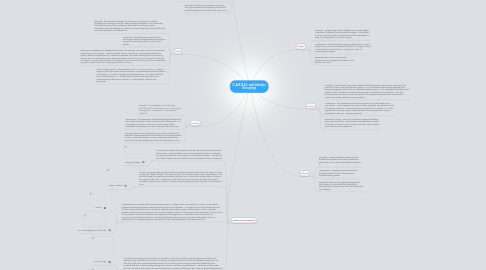C.A.R.G.E.L and Lifestyle Groupings
by Tara Namiq


1. Class
1.1. Strengths - the strengths of using class is that you can target your stories, language and issues you cover to a specific targeted audience. This means that it will appeal more to them as they are able to relate and have a good understanding and knowledge of it rather than something they're not familiar with or something they're not interested in.
1.2. Weaknesses - the weaknesses are that if you only target a specific target audience/area you're going to be excluding a whole level of other people.
1.3. Examples: Newspapers are categorised into class. For example, The Times and The Sun are both owned by the same people - Rupert Murdoch's News Corporation. This company decided to create 2 different newspapers for 2 different audiences. This means that they are not excluding anyone. The Sun is for anyone from ages 8 and above, which means it is not complex in the way it is written, as 8 year olds are able to understand it. The Times on the other hand, is complex and long and may be harder for the younger audience to read.
1.4. Class is categorised in 7 sections/parts: a, b, c1, c2, d1, d2 and e. A = judges, surgeons and large scale company directors. B: professionals, teachers, lawyers and doctors. C1 = office managers and skilled workers. C2 = admin staff and some skilled trades. D1 = skilled trades, plumbers and electricians. D2 = unskiled trades, labourers and drives. E = unemployed, students and pensioners.
2. Age
2.1. Strengths - the strengths are that it will appeal to whatever age group its targeted at. The target age will be able to relate to them and their lifestyle/needs because if it was a teenager they would be more into soaps but if it was a toddler they wouldn't be interested in soaps.
2.2. Weaknesses - the weaknesses are that it would lose viewers as it excludes other people. It focuses on only one type that it forgets about the other people who may be interested in the show.
2.3. Examples: a children's programmes such as In the Night Garden would appeal to children but wouldn't appeal to the people of the ages 18-22.
3. Location
3.1. Strengths - the strengths are that its really helpful/useful for the people who live in the area its targeted at. It appeals to a concentrated audience.
3.2. Weaknesses - the weaknesses would be that people outside the area wouldn't be able to listen/watch to what is being said. Or if its targeted in more than one area, the areas may not be interested whats going on in other areas apart from their own.
3.3. Examples: BBC radio 5 lives target area is London & the south east which means people who live outside this area wont be able to tune in, but also people in London might not want to know about the local news happening in the south-east and vice versa.
4. SUBCULTURAL GROUPS
4.1. Reformers are people who appeal to change and want to make the world a better place - cleaner, healthier and environmentally friendly. For example, camping holidays rather than expensive and abroad holidays. A strength for this is that it makes a world a better and it much better for the environment.
4.1.1. Camping holidays
4.2. Aspirers are people who aspire to be like succeeders, want what they cant have, aspire for more money and a better lifestyle. A strength of this is that it helps people create a goal/dream in life which will keep them going with whatever job they have. Their dream sustains them and gives them hope for their life. A weakness is that those who know will never be able to become a succeeder makes it hard for them to watch certain programmes that makes them wish they had more.
4.2.1. Made in Chelsea
4.3. Mainstreamers are people who enjoy watching popular TV programmes. For example, X Factor is a mainstream programme that many people mainly because its prime time television. A strength for this is that viewers are able to have conversations about the mainstream show because mostly everyone watches them - this is a strength because it promotes the programme, so if someone forgot to watch it, they will go home and watch it online due to the amount of conversations about certain aspects of the programme. A weakness is that if the particular programme has a offensive aspect or a bad part that makes people mad or annoyed, reduces the viewers. In other words, if the programme does not meet up to the high expectations, then viewers are lost.
4.3.1. X Factor
4.3.2. I'm a celebrity get me out of here
4.4. Succeeders are people who have become successful in life and are able to pay for expensive products. For example, high end fashion lines such as Givenchy. Strengths of succeeders are that because people who are able to pay for their expensive products and are a fan of the specific company/brand will always buy their products and due to prices being very high the company will have a good income. A weakness is that people who are not able to afford the expensive products are excluded and therefore the company/brand loses potential promotion of products. The people who regularly buy products do promote but having a wide range of buyers attracts buyers from different backgrounds.
4.4.1. Givenchy logo
4.4.2. Gucci
